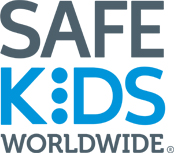You are here
Search
What if you could change the news to avoid a tragedy or save a life?
That’s the question I asked myself when I was reading the newspaper one day and saw a story about a young child who died in a car crash. It turned out he wasn’t buckled up. It broke my heart to know the news could have been much different if the child had been safely secured in a car seat, and that feeling inspired an idea for a new series Public Service Announcements called Changing the News.
Children are twice as likely to be hit by a car and killed on Halloween than on any other day.
Washington, D.C. – Halloween can be one of the most fun nights of the year for children across America, but for parents, it can be the most nerve-wracking as well. On average, twice as many kids are killed while walking on Halloween than on any other day of the year. By taking just a few simple precautions, kids, parents and drivers can make the night fun and safe.
Sometimes, positive change comes from bad things.
Nine years ago, Zackery Lystedt was a playing football game with his team at Maple Valley Junior High. Zack went back into the game in the fourth quarter after a hard hit in the third. The game ended, his dad, Victor, ran out onto the field to congratulate Zach for a good play. Zack told his dad that his head hurt. Then, he said, he couldn't see, and then Zack collapsed onto the field.
Did you hear the one about the street sign that tried to be funny? Nowadays, the highway signs originally designed to tell drivers about upcoming traffic jams or detours, also display signs to keep us safe. They tell us to buckle up our seat belts and child restraints, keep a safe following distance, and never drive after drinking alcohol.
Launched in Pune, the Safe Kids at Home program seeks to prevent and reduce burns and scald injuries among children.
The weeks between Thanksgiving and New Year’s Day are arguably the busiest of the year. Families are planning trips to visit relatives, searching for thoughtful gifts, preparing special meals and many other tasks to make the holidays the most wonderful time of the year.
When someone turns on the ignition of a car while under the influence of alcohol, all of us are at risk. That is especially true for kids who are along for the ride in a passenger seat, and others who share the roads with drivers.
Safe Kids Worldwide Increases Leadership Diversity through Four New Board Members
Washington, D.C. – Safe Kids Worldwide announced today the addition of five board members to support the deepening of its programs in the United States and the increasing global focus of the organization.
Did you hear about the 75,000 Britax infant car seats that were recalled? We have the details here.
Like many young parents, my wife and I are reaching a point that both excites and terrifies us at the same time - our seven-month-old daughter, Lilly, is starting to crawl. To see her beautiful face light up as she desperately tries to kick, claw and propel herself across our living room is a joy every day.
